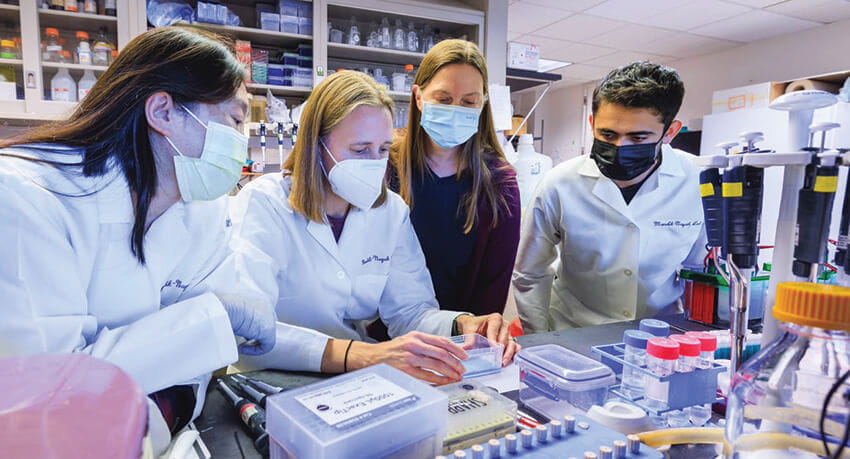Research brings autoimmune disease treatment closer

When Laura Mandik-Nayak, PhD, arrived at Lankenau Institute for Medical Research (LIMR) in 2006 as a young scientist devoted to exploring the causes of autoimmune disease, she found the institute's president and CEO immersed in efforts to find a way to turn on the immune system to fight cancer. The relevance to her area of study became immediately clear.

George Prendergast, PhD, president and CEO, and LIMR researcher Alexander Muller, PhD, felt stopping an enzyme believed responsible for shutting down the immune system held promise for cancer patients—but could leave those also suffering from autoimmune disease out in the cold.
"The immune system of someone with an autoimmune disease such as rheumatoid arthritis (RA) is already on overdrive, attacking the body's healthy cells as well as foreign bacteria and viruses," Mandik-Nayak says. "If you have autoimmune disease and you're waking up the immune system, you would expect that to make it worse."
But when they experimented on mice with RA, she says, "We found it was the reverse. It was turning off the arthritis."
Kicking off further research and studies
The surprise marked the beginning of Mandik-Nayak's journey to find a drug targeting the enzyme indoleamine 2, 3-dioxygenase 2 (IDO2) to treat RA patients. That journey, she believes, will extend to numerous autoimmune diseases.
"I think the underlying causes of autoimmune diseases are probably pretty similar," Mandik-Nayak says. "They may be using common pathways. With Type 1 diabetes, the immune system is attacking your pancreas. In the case of RA, it's attacking your joints and possibly other body systems, such as the skin, eyes, lungs and heart. With lupus, the attack is most widespread. The disease can potentially damage most of the body's tissues and organs."
Mandik-Nayak's reasoning about the similarities among autoimmune diseases is shared by the Myasthenia Gravis Foundation. She has received a pilot grant to determine if the lessons learned from RA apply to myasthenia gravis as well. In patients with myasthenia gravis, communication between nerves and muscle is destroyed, resulting in weakness of the skeletal muscles and affecting the eyes, mouth, throat and limbs in particular.
Progress with RA remains the primary thrust. RA affects around 1% of the world population and can begin at any age, although the chance of onset is highest for those in their 60s. Women are two to three times more likely to develop the condition than men.
Of course, blocking the IDO2 pathway to treat RA is not as simple as turning off a switch. Mandik-Nayak and her team continue to search for an approach that's practical for treatment.
Initial studies with LIMR colleagues Lisa Laury-Kleintop, PhD, and Lauren Merlo, PhD, used a monoclonal antibody to target IDO2 that appears effective in preclinical RA models. However, the antibody's mechanism remains difficult to explain and efforts to obtain funding for further research have been challenging.
Mandik-Nayak's team also saw success with genetic material called small interfering RNA (siRNA), using a novel delivery system to protect and direct the siRNA used by retired LIMR professor Janet Sawicki, PhD, to inhibit the expression of proteins involved in cancer.
"However, even the protected siRNA has a short half-life," Mandik-Nayak says. "So you would need repeated injections. That means it might be difficult to translate into a feasible therapy. We need a better approach."
Read more from Catalyst Magazine
Learn more about Lankenau Institute for Medical Research (LIMR)